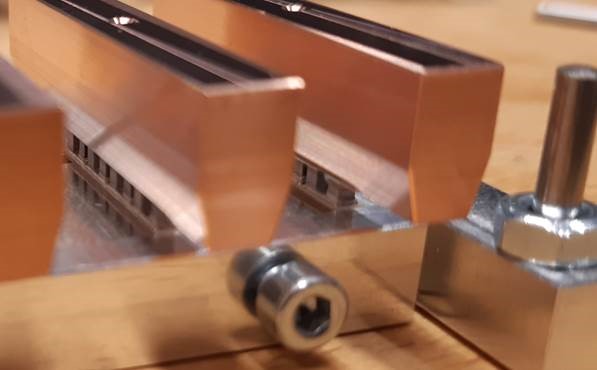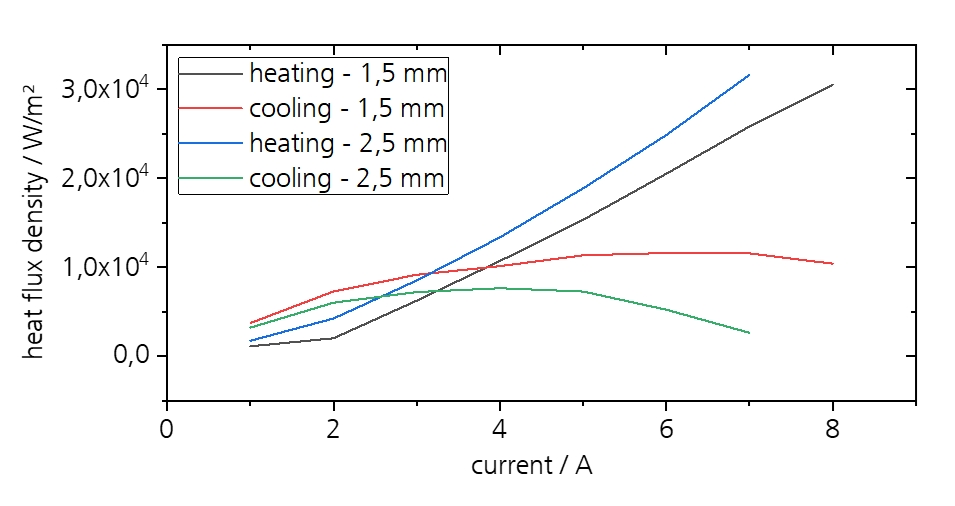

In the case of Peltier elements, alternatives to the usual planar design are occasionally required with regard to thermal coupling. As part of a research project, we developed and manufactured strips made of thermoelectric material, which we have connected in series and arranged around a thin-walled tube. This »tube pelt« concept is aimed at very precisely tempering tubes made of a shape memory material so that they can be used as actuators in a very small available space. The tubes are made of the thermal shape memory alloy Nitinol. By changing the temperature, a change of the material’s initial crystalline structure (martensite) into an expanded state (austenite) is induced. This transition from the martensitic to the austenitic phase entails a movement so that the stroke can be thermally controlled and used as an actuator. Thermal coupling is crucial here: the greater the pressure, the better the compensation of unevenness; at the same time, too much force on the material (in our case bismuth telluride) may damage the thermoelectric legs. As an unsymmetrical assembly or shear forces might also destroy the legs, the assembly of the »tube pelt« was realized using a specially developed assembly device. This demonstrator setup achieved heat flow densities for heating of > 30,000 W/m² and for cooling of about 12,000 W/m².